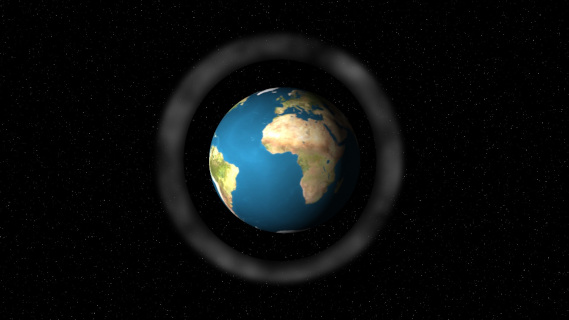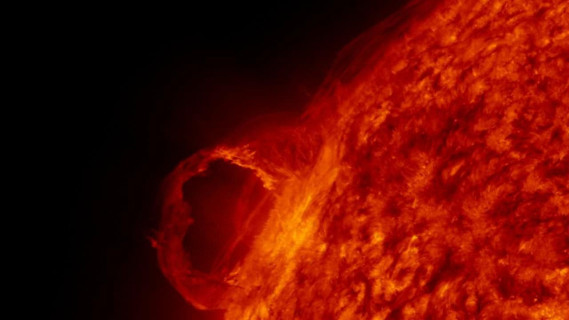Earth’s Climate

Earth’s climate in the past and the recent changes
Earth was formed approximately 4,5 billion years ago according to scientists and conditions were very different from today. In particular Earth’s climate has continuously changed throughout history but we know a lot about what the Earth’s climate was like because of the clues that remain in rocks, ice, and fossil trees. Scientists have determined that Just in the last 650,000 years there have been seven cycles of glacial advance and retreat (or the so-called “Ice Ages”), with the abrupt end of the last ice age about 11,700 years ago. This point in Earth’s history marked the beginning of the modern climate era — and of human civilization. Thus in the last 11,700 years or so, the climate on Earth has been relatively stable, which has contributed to the evolution of many species and of modern society.
However today’s climate change is different from past climate change in many ways: natural causes have a minor impact, and even variations in the sun’s activity, and Earth’s orbit can not fully explain the changes we are seeing today. Undoubtedly humans’ activities are the main driver of climate change and in particular the use of fossil fuels (including natural gas, oil and coal) are nowadays overloading the atmosphere with carbon dioxide (CO2) and thus adding to the greenhouse effect. Moreover other greenhouse gasses such as methane (CH4) and nitrous oxide are at record levels in the atmosphere. As a result, on the one hand, global warming is intensifying, and on the other, oceans are becoming more acidic because they absorb part of the CO2 emissions altering the conditions of this delicate ecosystem, and this is threatening the existence of many marine species. It is therefore imperative to tackle climate change and cut all greenhouse emissions to secure our survival and all other species’ existence on this planet.

The natural greenhouse effect
The Natural greenhouse effect is a natural process which occurs since the Earth has an atmosphere: gasses in the atmosphere, primarily carbon dioxide [CO2], methane [CH4], nitrous oxide [N2O], ozone [O3] and water vapor [H2O] (called “natural greenhouse gases”) trap the sun’s heat that warms the Earth’s surface to its comfortable average of 15 degrees Celsius (59 degrees Fahrenheit) and thus keeps life on this planet ad render it livable. Without this natural effect planet Earth would be an uninhabitable frozen planet.

The atmosphere and the natural greenhouse gasses
Earth’s atmosphere is composed of about 78 percent of nitrogen, 21 percent oxygen, 0.93 percent argon, 0.04 percent carbon dioxide and the remaining 0.03 percent of other gasses. The natural greenhouse gasses contained in the Earth’s atmosphere, even if in very low concentrations, have a fundamental impact on the climate. They, in fact, unlike nitrogen and oxygen, are capable of absorbing thermal radiation in such a way as to prevent its dispersion into space. The Earth’s atmosphere without these gases would make the climate very cold (at least 33 °C lower).

Volcanoes can affect climate
Volcanoes can affect the Earth’s climate. During eruptions large quantities of gasses (among them huge quantities of CO2) and ash are released into the atmosphere. Injected ash and other dust particles generally fall rapidly and has little impact on climate change, but a prolonged suspension in the atmosphere shading incoming solar radiation provoke a cooling effect which can last months or years depending of the intensity of the volcanic activity, while carbon dioxide (CO2) a greenhouse gas, contribute to global warming.

The Sun
Considered a prerequisite for life on Earth, “solar radiation” is, in part, responsible for some important climate change in the distant past. The so-called “sunspots”, i.e. the dark spots on the surface of the sun, are very useful parameters to measure solar activity. It has been observed that their number varies every 11 years (the so-called “eleven years cycle of solar activity”) and during these cycles solar activity intensifies (this period is characterized by the formation of facole), but also the solar activity decreases following this cycle. These continuous variations in the solar activity affect global and regional temperatures on Earth.

The clouds
Clouds play a very important role: they disperse light from the Sun, and, as a result earth’s surface heats up less because it receives less solar radiation. Clouds also absorb the thermal radiation emitted by the Earth’s surface and then release it again in all directions: a part of this energy (heat) is therefore retained by the Earth’s system.
The clouds formed in the upper troposphere, which are called “cirrus”, are usually very thin, which is why they shield the Earth from only a small part of the incoming solar radiation. In addition, they are cold, so they release little heat into space, thus in general they have a heating effect. On the contrary, low clouds, usually much thicker, always have a cooling effect on the global average climate, this is because they disperse much of the incoming solar radiation back into space.
Under current conditions the cooling effect of the clouds is the prevailing one.

The thermohaline circulation
The thermohaline circulation (sometimes also called “large ocean conveyor belt”) is that part of the ocean circulation which is driven by density differences as opposed to wind-driven currents and tides (which are also provoked by the gravity of the moon and sun). As a matter of fact seawater density is strictly correlated to temperature and salinity (hence the name “thermohaline”). Notably ice formation enhances salinity and run-off and ice-melt decreases salinity. This kind of “conveyor belt” actually moves large amounts of heat, which have a significant impact on the climate. If, for example, the Atlantic part of the conveyor belt were to stop completely, the air temperature would drop by an average of 1-2 °C in the northern hemisphere and by as much as 8 °C in the area above the North Atlantic. It is important to stress that salinity and temperature differences which are derived from heating-cooling at the sea surface, are also influenced by other conditions such as surface freshwater fluxes including evaporation and precipitation.







